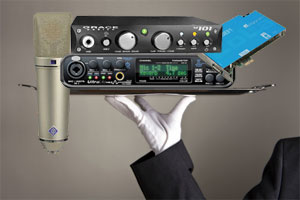 One of my readers sent me an e-mail that asked the following:
One of my readers sent me an e-mail that asked the following:
Ken,
Out of sheer curiosity, if you were shopping for a voiceover microphone and preamp and money weren’t a factor, what would you pick?
Same question with a 2,000 budget.
Thank you, and have a fantastic night!
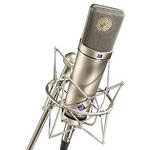

It was really a fun exercise, kinda like when someone asks you what you would do if you won the lottery. I looked into a lot of high-end audio gear for this. Since this particular person was interested in a voice-over set-up, it helped me focus my research. I wouldn’t need the capability to record multiple microphone inputs at once like I would for music recording, where I’d want enough microphone inputs and simultaneous recording capability to handle at least 8, but more likely 16 sources. Also, my choices would have to work with Windows, since I don’t own a Mac. Anyway, below is the result of my trip to fantasy land of unlimited budgets:
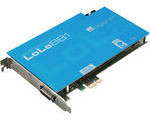
Sorry for the delay. If money were no factor I would probably not have a single “interface” unit, but a 3-part preamp, A/D converter, and I/O interface. I think an excellent set-up would be a Neumann U87 mic (~$3,600) going through a Grace Design m101 Preamp (~$700) going through a Forssell MADC-2 ($2,950) going into a Digigram LoLa881 PCIe Multi-Channel Digital Audio Card ($969). So I guess that would come to about $8,219. Fun exercise;).


For a budget of $2,000 I’d do a Sennheiser MKH 416 shotgun mic (~$1,000) into an MOTU UltraLIte-mk3 Hybrid FireWire/USB Audio & MIDI Interface (~$539) for a total of $1,539. I couldn’t find any other combo that fit under $2,000. The next closest exceeds it by $549, and that combo would be the MKH 416 into an RME Fireface UCX – USB and FireWire Audio Interface ($1,549).
This was a really fun exercise. Now I know better what kinds of high-end audio gear is available if I’m ever so rich that money becomes “no object.” For those of your who are already there, well here is a good list to get you going;).
Home Recording Equipment
What is MIDI? A Big Help in Home Music Recording, That's What
 If you’re a musician doing home music recording, then you probably want to know about something called “MIDI” (pronounced middee) if you don’t already. So this article ought to be useful. But I have discovered that it is well-nigh impossible to know everything about anything. This was a great stress-relieving discovery! I always felt a little like I was somehow just toying around with something if I didn’t understand everything about it, including the origin, underlying code, every possible use, etc. But not knowing how an engine works never stopped me driving a car. Not knowing how to build a television from scratch does not make me feel unworthy to use a TV. So it is with MIDI, and most things in the music and audio recording world. You only need to know what you need to know to get the things done you need to get done. That last sentence is both profound and confusing at the same time, but it is truth! Once you accept it, your stress levels may well drop. Mine did.
If you’re a musician doing home music recording, then you probably want to know about something called “MIDI” (pronounced middee) if you don’t already. So this article ought to be useful. But I have discovered that it is well-nigh impossible to know everything about anything. This was a great stress-relieving discovery! I always felt a little like I was somehow just toying around with something if I didn’t understand everything about it, including the origin, underlying code, every possible use, etc. But not knowing how an engine works never stopped me driving a car. Not knowing how to build a television from scratch does not make me feel unworthy to use a TV. So it is with MIDI, and most things in the music and audio recording world. You only need to know what you need to know to get the things done you need to get done. That last sentence is both profound and confusing at the same time, but it is truth! Once you accept it, your stress levels may well drop. Mine did.So here is what I consider to be the most useful and basic information about midi. First, let’s try an unconventional definition. MIDI is modern “player-piano” music. Surely you’ve seen, on TV at least, those pianos from decades ago that could play by themselves, right? Well, in order for it to play a particular song, it needs someone to feed it a roll of paper with a bunch of holes in it…player-piano music. MIDI is the same thing, except for computers.
There. Done. See how easy it really is? You truly don’t need to know that MIDI is an acronym for musical instrument digital interface (or something like that….SEE? even I don’t care what it stands for!). All you really need to know is that if you have a MIDI file (*.mid), it will tell your computer to play music, usually through the MIDI instruments that exist on just about every sound card known to man in the last 10 years.
MIDI is not an audio file, like an mp3, or wav, so the file sizes are REALLY small, like the size of a text file. That’s because, like player-piano music, it’s mostly just a bunch of “on” and “off” messages. That’s one reason they are so great for the internet. Let’s say you’re on a website that has MIDI files of songs. Those files will tell YOUR computer to play the notes. It will sound different on every computer because the sound cards are different.
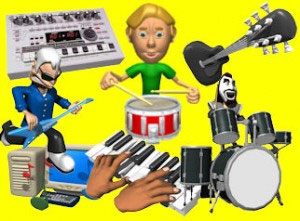 You can have your MIDI file play any instrument on your sound card. For example, if you have a MIDI file of “Mary Had a Little Lamb,” it might be set to play the piano instrument on your computer. You can then switch and hear the song playing on, say, and accordion, or a fiddle. Now these sound card instruments are frequently pretty cheesy sounding. Things really start to get interesting when you procure “virtual instruments” for your computer. There are many free ones on the internet to experiment with. What’s great about those is that they sound REALLY good. Some of them are actual recordings of the real instrument! So when your MIDI file plays that instrument, it can sound astonishingly real. Just get yourself some MIDI software (a program capable of using MIDI, such as Reaper, Pro Tools and the like.
You can have your MIDI file play any instrument on your sound card. For example, if you have a MIDI file of “Mary Had a Little Lamb,” it might be set to play the piano instrument on your computer. You can then switch and hear the song playing on, say, and accordion, or a fiddle. Now these sound card instruments are frequently pretty cheesy sounding. Things really start to get interesting when you procure “virtual instruments” for your computer. There are many free ones on the internet to experiment with. What’s great about those is that they sound REALLY good. Some of them are actual recordings of the real instrument! So when your MIDI file plays that instrument, it can sound astonishingly real. Just get yourself some MIDI software (a program capable of using MIDI, such as Reaper, Pro Tools and the like.If you want to create your own MIDI files, there is lots of software out there for you to use; again, some of it free of charge. You can usually use your computer keyboards to write the notes, but most folks use a little piano-type keyboard, called midi keyboards (surprising, no?) connected via USB these days. That way, you can “record” MIDI by playing it like a piano. Then you can edit the midi file with your mouse, correcting timing and note flubs, etc. by dragging them around!
Bottom line…MIDI is awesome. Most of what you REALLY need to know is in this article, unless you are going to become a MIDI ninja. And a great place to get started becoming one of those is with our newest tutorial course – The Newbies Guide To Audio Recording Awesomeness 2 – Pro Recording With Reaper. Lesson 11 is a 3-parter showing you how to do all the stuff I talked about above using free virtual instruments.
We like to teach audio recording in plain language…like, for regular people (as opposed to engineers). If you’re not ready to buy a course yet, there are tons (over 400 at last count) of free articles right here on the site. Just click here and find out how to record good quality audio on a home studio costing $5.00 or less. Home recording is easier and less expensive than you can imagine.
See you around campus!
New Versions of Mixcraft Recording Software
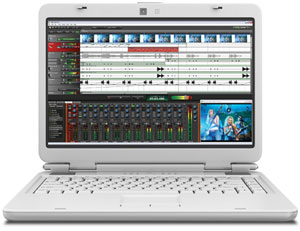
Someone asked me this morning if I could talk a bit about Mixcraft recording software (technically a DAW – digital audio workstation) by Acoustica. Since I am always going on about Reaper (my favorite DAW – digital audio workstation), which is my go-to recording program, he wanted to know if I could sort of compare and contrast the two.
Recording Magazine has a blurb in the FASTFORWARD section of the September 2012 issue telling us that Acoustica has shipped the new version of Mixcraft – Mixcraft 6 and Mixcraft Pro Studio 6. Like Reaper, Mixcraft 6 is in that category of affordable audio software that delivers professional recording capability. Both would be terrific for any home recording studio. In looking at the description of Mixcraft features, I didn’t see any that Reaper didn’t have except for the loop library you get with Mixcraft with 6,000 loops. If you plan on using loops a lot, this might be a tick in the Mixcraft column.
The two versions of Mixcraft are priced at $75 and $150, respectively. Some of the things they heralded as new features are things Reaper has done from the start, like support for VST instruments (Lesson 11 in our new Reaper course, BTW;)), EQ effect, multi-band compressor, loop recording with multiple takes, and automated punch in/out.
The Mixcraft Pro Studio 6 version adds what Recording Magazine describes as “16 high-quality effects plug-ins” (they didn’t say what those were), and 3 virtual instruments (including the Pianissimo grand piano), as well as the very cool iZotope Mastering Essentials and 3 Mid-Side processing tools, tape emulation and 2 parametric EQs. I’m familiar with iZotope through their Ozone mastering suite and their T-Pain Effect Plugin. But I digress. Other additions in the Pro version of Mixcraft 6 are 3 Mid-Side (the stereo effect) processing tools, a tape emulation tool and 2 parametric EQ effects.
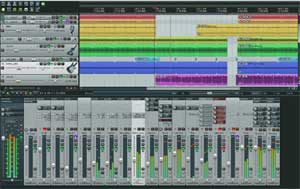
Reaper comes with over 200 effect plugins. It’s capability is vast and it’s programming is light, meaning it loads fast, has an installer that is only a couple of MBs and is portable on a USB drive! Updates come fast and often. There is Mac and Windows version, a 64-bit and 32-bit version. And the pricing model is unheard of. There is only one single version of Reaper, from the 30-day trial (that won’t stop working after 30 days if you need longer to evaluate!), to the “discount license” price of $60 to the “commercial license” of $225. It’s all the same. And who decides if you get the discount or the commercial license? You do! It’s an honor system. Their guideline (you can read all about this here: http://www.cockos.com/reaper/purchase.php) is that if you make $20,000 US dollars a year using Reaper, you should pay for the commercial license. Unbelievable. Plus the user community is like no other with an amazingly active forum. Can you tell I’m a fan?
However, like I said earlier, both programs offer a lot of audio recording capability for an incredible price.
To learn more about Mixcraft 6, click here.
Holiday Deals On Pro Audio Gear From B&H
Fresh off the Black Friday and Cyber Monday deals on Pro Audio equipment, B&H Pro Audio just announced their Holiday 2012 promotions – The Gift of Sound Lasts Forever.
Pearstone OLM-10 Omnidirectional Lavalier Microphone
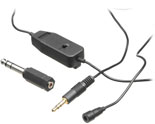
Lavalier (lapel) microphones make the audio quality on your videos MUCH better than what you get when you rely only on the video camera’s built-in microphones. Pearstone is offering a great deal on a “lav” mic that expires on Thursday, December 13th. The regular price is $22.95 – Now $16.95 plus free shipping. Click here for more info or to buy.
Audio-Technica AT897 Shotgun Mic
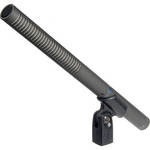
Shotgun mics are typically used when making videos and movies because they have a long range and sound great even a few feet away from the speaker, just out of frame. But more and more, shotgun mics are being used for voice-over work. They are less sensitive to plosives (p-pops) and sound very rich and pleasing on voices. Regular price $219 – Now $189 plus free shipping. Click here for more info or to buy.
Tascam DP-24 Digital Portastudio

This is unbelievable! Lowest price on the web right now. I went and checked all the major audio retailers to confirm. My very first multi-track recording studio was a VERY early version of this – The Tascam Porta-5 – and recorded 4 tracks (yeah 4 WHOLE tracks:)) onto cassette tape. It cost me $500. Now they have 24 tracks of digital audio for less! There are 8 microphone inputs and you can record 8 tracks simultaneously (this is awesome). Each of the 24 channels has 3-band EQ and there are other built-in effects on the unit. You can do all your recording and editing on the DP-24. But you can also copy your audio to computer via USB. Regular price $749 – Now $479 (plus there’s a $20 mail-in rebate for an even lower price of $459. Click here for more info or to buy.
Featured Headphones – Holiday 2012

There are 21 types of headphones being featured for the holiday, with free shipping on all of them. A great deal just announced on Wednesday, (Dec 5th) is the Sony MDR-7506 professional headphones. Regular price is $99 – now $74.95!
Featured Portable Digital Recorders Holiday 2012 – Saving up to $100

There are 15 of these handy digital recorders, all of which have free shipping. Five of them have mail-in rebates and two have an instant savings rebate.
Featured Microphones – Holiday 2012

Featured Microphones
32 different microphones are included in the holiday features. Free shipping and rebates available.
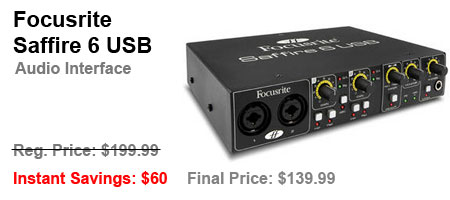
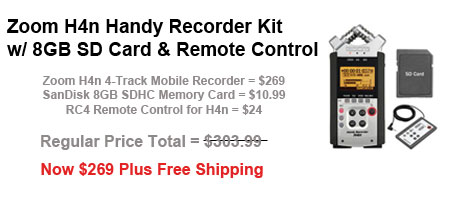
Square Headphones From Windows Phone Commercial
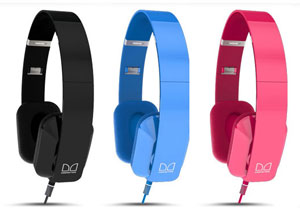
We were watching a commercial (kinda rare these days with the DVR and all) last night, the new Windows Phone ad, and saw a guy at a train station wearing some really slick looking yellow headphones with square ear cups. So off to the web went my wife (research girl) to find out what they were so I could post about them. It turns out that they are the Nokia Purity HD Headset by Monster headphones.
Features
The Purity phones are high-definition on-ear headphones with on-cable control for hands-free phone conversations. This includes an in-line mic and also controls for your music – play, rewind, pause, etc.
As is expected, the on-cable controls are fully compatible with the Windows Phone. With other devices, hands-free calling is compatible across the board, but music control is not.
The Pro Version of The Purity
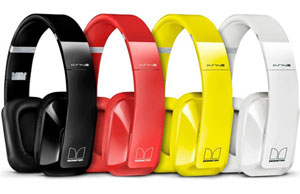
You’ll notice in the commercial that the headphones the guy is wearing are yellow, and that the regular Purity phones are only black, blue and pink. This is because it appears the specific pair the guy in the commercial is wearing are the Purity Pro version, which are not for sale anywhere yet. That is supposed to happen in December of 2012 – I’ll let you know as soon as I find that out! They are now available! CLICK HERE to get more detail info or to order a pair. The main difference between the regular version and the Pro version is that the Pros are “over-the-ear,” meaning that they are circumaural, meaning that your ear fits fully inside the cup, and they have active noise-cancellation. Also, the Pros have a wired AND wireless mode (very cool). And guess what? The Pros come in yellow. But it is much more useful to you to see a video describing the new Purity Pro headphones. So see that below:
So if you were curious about the cool square headphones in the Windows Phone commercial, now you know. To get your very own pair of the original Nokia Purity Headphones, click here. To get you own pair of the Purity Pros, CLICK HERE.